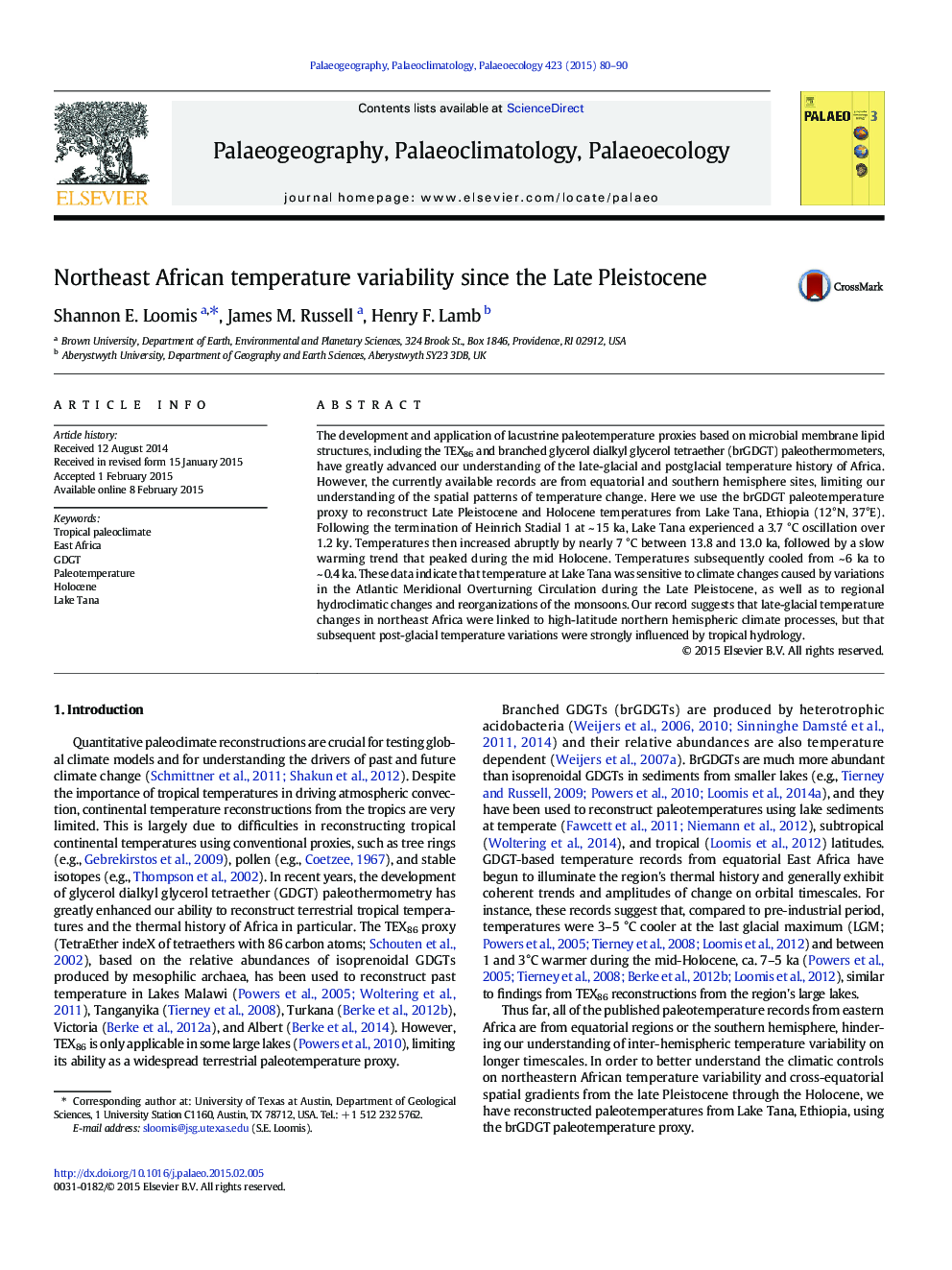| Article ID | Journal | Published Year | Pages | File Type |
|---|---|---|---|---|
| 4466042 | Palaeogeography, Palaeoclimatology, Palaeoecology | 2015 | 11 Pages |
•We present the first terrestrial temperature record from northern Africa (Lake Tana).•Temperature change at Lake Tana is affected by changes in the Indian Monsoon.•Magnitude of temperature change is larger than lower latitude sites in Africa.
The development and application of lacustrine paleotemperature proxies based on microbial membrane lipid structures, including the TEX86 and branched glycerol dialkyl glycerol tetraether (brGDGT) paleothermometers, have greatly advanced our understanding of the late-glacial and postglacial temperature history of Africa. However, the currently available records are from equatorial and southern hemisphere sites, limiting our understanding of the spatial patterns of temperature change. Here we use the brGDGT paleotemperature proxy to reconstruct Late Pleistocene and Holocene temperatures from Lake Tana, Ethiopia (12°N, 37°E). Following the termination of Heinrich Stadial 1 at ~ 15 ka, Lake Tana experienced a 3.7 °C oscillation over 1.2 ky. Temperatures then increased abruptly by nearly 7 °C between 13.8 and 13.0 ka, followed by a slow warming trend that peaked during the mid Holocene. Temperatures subsequently cooled from ~ 6 ka to ~ 0.4 ka. These data indicate that temperature at Lake Tana was sensitive to climate changes caused by variations in the Atlantic Meridional Overturning Circulation during the Late Pleistocene, as well as to regional hydroclimatic changes and reorganizations of the monsoons. Our record suggests that late-glacial temperature changes in northeast Africa were linked to high-latitude northern hemispheric climate processes, but that subsequent post-glacial temperature variations were strongly influenced by tropical hydrology.
